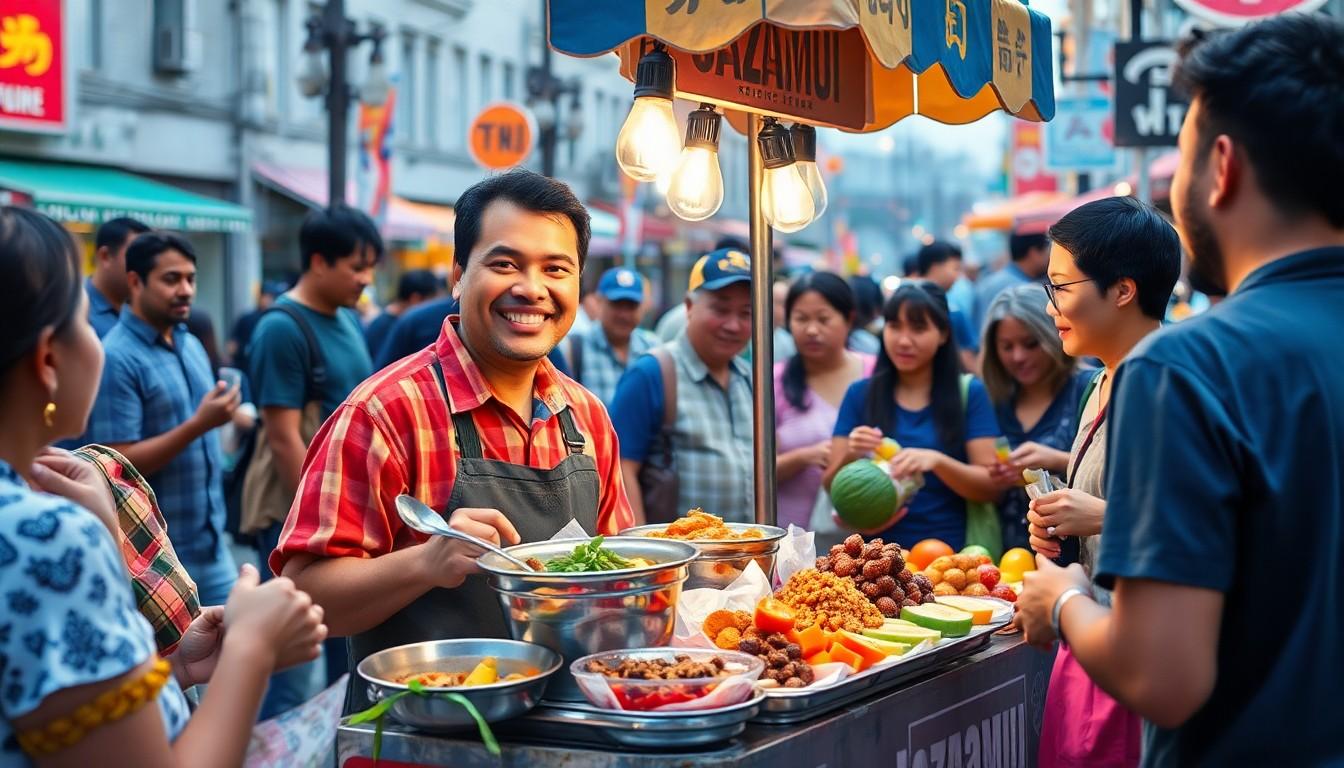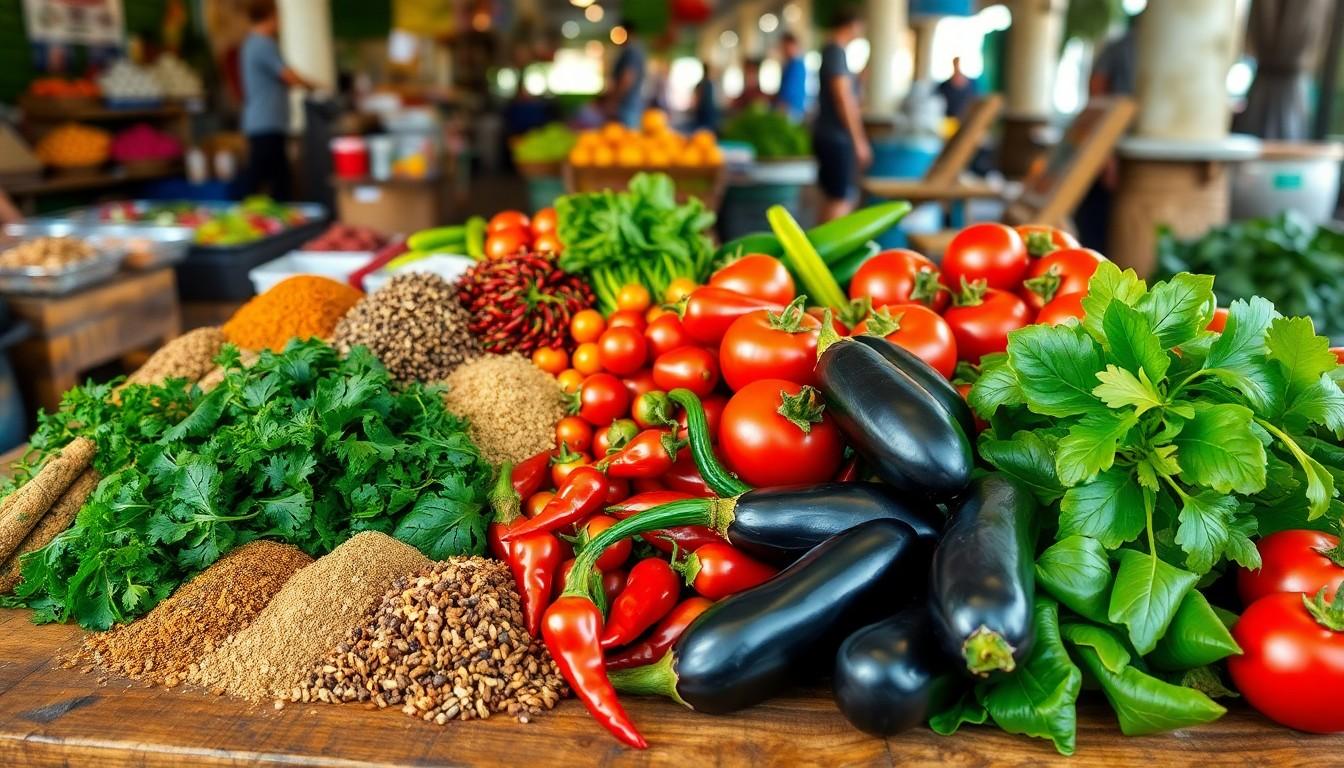
Highlights of Jazamui Food: Discover Flavorful Dishes and Irresistible Delights
Jazamui food isn’t just a meal; it’s an adventure for the taste buds. Imagine biting into a dish that’s as vibrant as a carnival and as comforting as grandma’s kitchen. From savory stews that could make a grown man weep to desserts so sweet they might just give you a toothache, Jazamui cuisine has something for everyone.
Overview of Jazamui Food
Jazamui food stands out for its rich tapestry of flavors and textures. Influences from various cultures contribute to its unique offerings. Savory stews, often brimming with spices and fresh ingredients, create deeply satisfying meals. Cooked slowly, these dishes develop robust flavors that resonate with those who enjoy hearty fare.
Vegetables play a significant role in Jazamui cuisine. Seasonal ingredients, carefully selected, form the base of many traditional dishes. Various grains, such as rice and millet, complement the stews, providing nourishment and substance.
Desserts in Jazamui food bring a delightful sweetness to the culinary experience. Typically made with local fruits and nuts, these confections offer a contrast to the savory elements. Often, pastries filled with sweetened ingredients showcase meticulous craftsmanship, pleasing both the eye and the palate.
Street food also holds a crucial position in Jazamui culinary culture. Vendors serve up bite-sized delights that highlight local flavors, making it easy for people to enjoy on the go. Snacks like spiced fritters and grilled meats provide quick and flavorful options.
Cultural events and gatherings frequently celebrate Jazamui food. Families come together to share traditional recipes, ensuring that the culinary heritage remains vibrant. Through communal meals, connections strengthen as dishes are passed around, uniting people in their love for this cuisine.
Overall, Jazamui food reflects a harmonious blend of flavors, textures, and cultural traditions, making its culinary landscape diverse and inviting.
Unique Ingredients in Jazamui Cuisine

Jazamui cuisine showcases a remarkable array of unique ingredients that elevate its dishes. The richness of flavors stems from the careful selection of local spices and seasonal produce.
Local Spices and Herbs
Local spices and herbs play a pivotal role in Jazamui food. These ingredients include cumin, coriander, and chili pepper, each contributing distinct flavors to the meals. Cumin adds a warm, earthy essence, while coriander introduces a refreshing brightness. Chili pepper brings heat, enhancing the overall taste profile. Knowledge of blending these spices creates signature dishes that embody the essence of Jazamui cooking. Vendors often use locally sourced herbs like parsley and mint to garnish and enhance the presentation of meals.
Seasonal Produce
Seasonal produce serves as the backbone of Jazamui cuisine. Fresh vegetables and fruits vary throughout the year, influencing dish composition. During harvest season, ingredients like tomatoes, eggplants, and leafy greens take center stage, enriching stews and side dishes. Local markets brim with vibrant produce, allowing chefs to incorporate the best seasonal offerings. Grains such as rice and millet complement these ingredients, providing a fulfilling base for many dishes. The emphasis on using seasonal produce underscores a commitment to freshness and sustainability within Jazamui culinary traditions.
Signature Dishes of Jazamui
Jazamui cuisine showcases an array of signature dishes, reflecting its rich cultural heritage and culinary traditions. Traditional recipes thrive alongside modern adaptations, appealing to diverse palates.
Traditional Preparations
Traditional Jazamui dishes often involve slow-cooked stews layered with spices and hearty ingredients. They frequently include a combination of meats, legumes, and seasonal vegetables, simmered to enhance flavor depth. Recipes passed down through generations highlight the importance of local spices like cumin and coriander, adding authenticity to each meal. Stews served with rice or millet remain staples, offering comfort and nourishment. Desserts such as fruit tarts crafted from local ingredients provide a sweet finale to meals. Each dish encapsulates the warmth and hospitality inherent in Jazamui culture, promoting shared dining experiences.
Modern Twists on Classics
Modern interpretations of Jazamui classics incorporate new techniques and international influences. Chefs creatively experiment with traditional stews, introducing ingredients like quinoa or exotic spices to elevate flavors. Dishes that feature grilled meats often serve alongside vibrant salads incorporating seasonal produce, creating refreshing contrasts. Street food options now include fusion snacks, such as spicy tacos made with Jazamui ingredients, bridging culinary gaps. Desserts also embrace modern trends, with presentations that blend tradition and innovation. These adaptations reflect an evolving culinary scene, ensuring Jazamui cuisine remains relevant and exciting.
Cultural Significance of Jazamui Food
Jazamui food holds deep cultural importance, enriching social connections and traditions. Culinary experiences mirror the values and heritage of the community, evidenced through various celebrations and gatherings.
Festive Occasions
Festivals in the Jazamui culture showcase an array of traditional dishes. Hearty stews and vibrant side dishes dominate the tables during these events. Signature dishes often feature unique spices, highlighting regional flavors. During celebrations, communal meals strengthen bonds among families, creating lasting memories. Specific desserts such as fruit tarts become favorites, bringing sweetness to the festive atmosphere. Shared dishes symbolize unity, echoing the collective identity of the Jazamui people.
Community Gatherings
Community gatherings play an essential role in preserving Jazamui culinary traditions. They serve as venues for sharing recipes passed down through generations. Local vendors contribute to these events by offering popular street food options like spiced fritters and grilled meats. Striking a balance between heritage and innovation, gatherings invite creative twists on classic dishes. Together, people participate in meal preparation, reinforcing communal ties. These culinary practices ensure that the rich flavors and cherished recipes remain central to Jazamui identity.
Conclusion
Jazamui food embodies a vibrant fusion of flavors and cultural significance. Its savory stews and sweet desserts create a culinary experience that resonates deeply with those who partake. The emphasis on local ingredients and traditional recipes showcases a commitment to freshness and sustainability while celebrating the community’s rich heritage.
As Jazamui cuisine continues to evolve, it remains a testament to the enduring connections forged through shared meals and festive gatherings. The culinary landscape thrives on innovation while honoring time-honored traditions, ensuring that the essence of Jazamui food captivates both locals and visitors alike.
